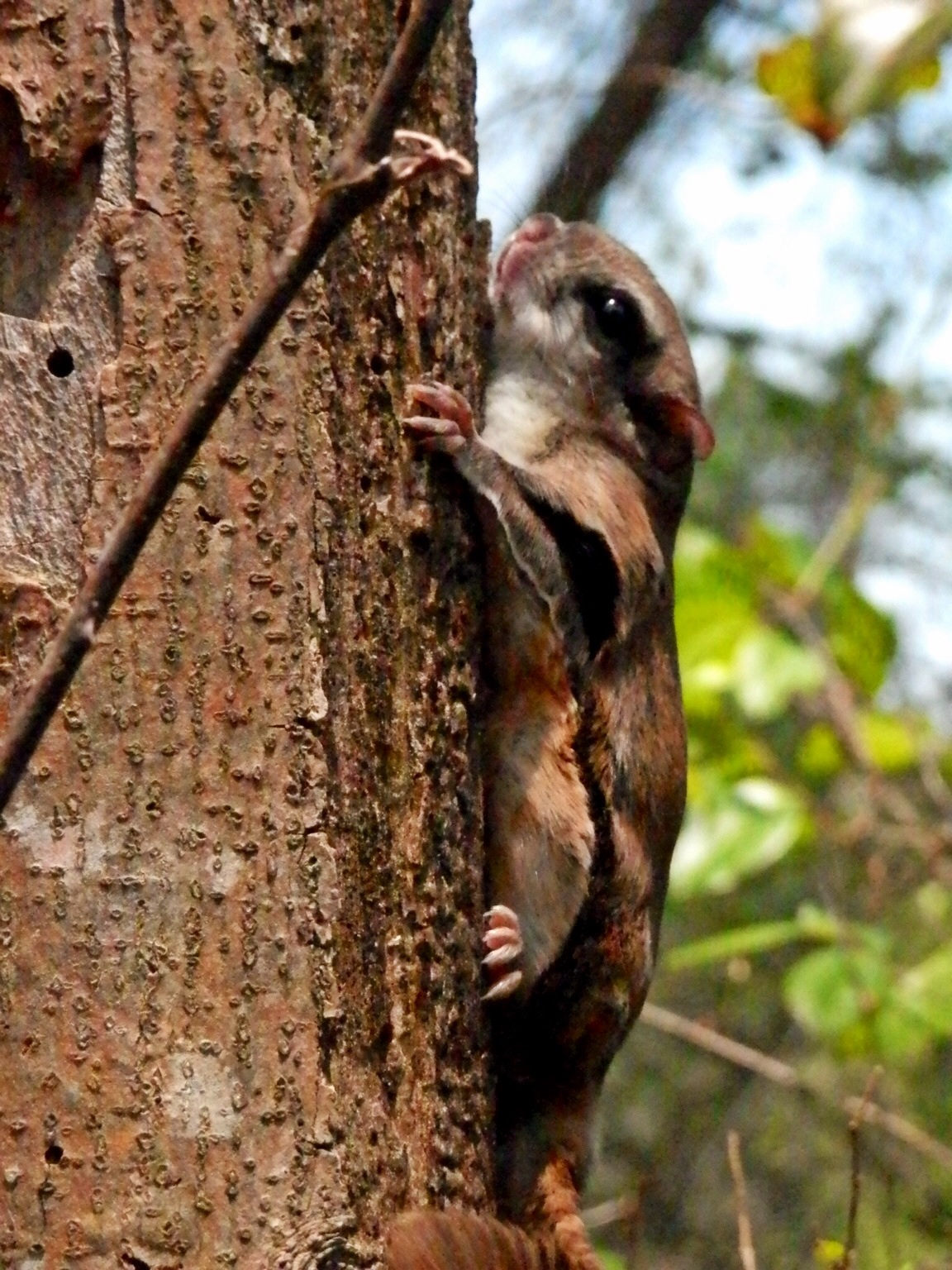 |
 |
|
Southern Flying Squirrel - Glaucomys volans Sciuridae Members: | Search Common: Search Scientific: |
|
|
||||||
 Photo by: Shelly Vest |
| Distribution |
In NC, it is assumed to occur statewide, though it is quite secretive and not confirmed in a number of counties. Occurs over most of the eastern United States and extreme southern Canada, south to the Gulf Coast. | |
| Abundance | Though not often seen by the public, mammalogists consider it to be common, at least relatively so, over the entire state, well into the middle elevations of the mountains and also on the Outer Banks and other barrier islands with forests (though seemingly no records yet for Dare County). Note that the iNaturalist website contains photos for about one-third of the state's counties, and the editors have not taken the time to update the map with "Photo" records/documentation unless the county had previously no known records (white on the map). | |
| Seasonal Occurrence | Active year-round, though such activity is reduced in winter. | |
| Habitat |
Generally in hardwood or mixed forests, of various moisture. Mature forests are preferred, as the squirrels roost and nest in old woodpecker holes and other tree cavities, which are more likely to be found in large trees. They often occur in wooded residential areas, and can utilize bird boxes or attics of homes for roosting or nesting. See also Habitat Account for General Oak-Hickory Forests | |
| Behavior | Strictly nocturnal in activity. They are most easily detected by their high pitched squeaking or hissing calls. This and the Northern Flying Squirrel are well known for their gliding habits, which no other North American mammals show; glides are normally from high up in one tree toward the bottom of another tree, often 50 or more feet away. | |
| Comments | It is unfortunate that flying squirrels are nocturnal, unlike our three other squirrels, as their behavior is so spectacular. The species can occasionally be seen by tapping on a hollow tree with a woodpecker cavity, and hoping on a rare occasion that a squirrel will poke its head out of the hole. They can sometimes be seen at night in yards that are well lit, and they sometimes come to food left out on a balcony railing, for example. | |
| Origin | Native | |
| NC List | Official | |
| S5 | ||
| State Status | ||
| G5 | ||
| Federal Status | ||
| subspecies |
Glaucomys volans volans, Glaucomys volans saturatus G. v. saturatus occurs in the southern Piedmont and apparently the Sandhills, and possibly in the southern mountains. Otherwise, G. v. volans is present over most of the state. | |
| other_comName | ||
| synonym | ||
| NC Map Map depicts all counties with a report (transient or resident) for the species. | Click on county for list of all database records for species in that county. |